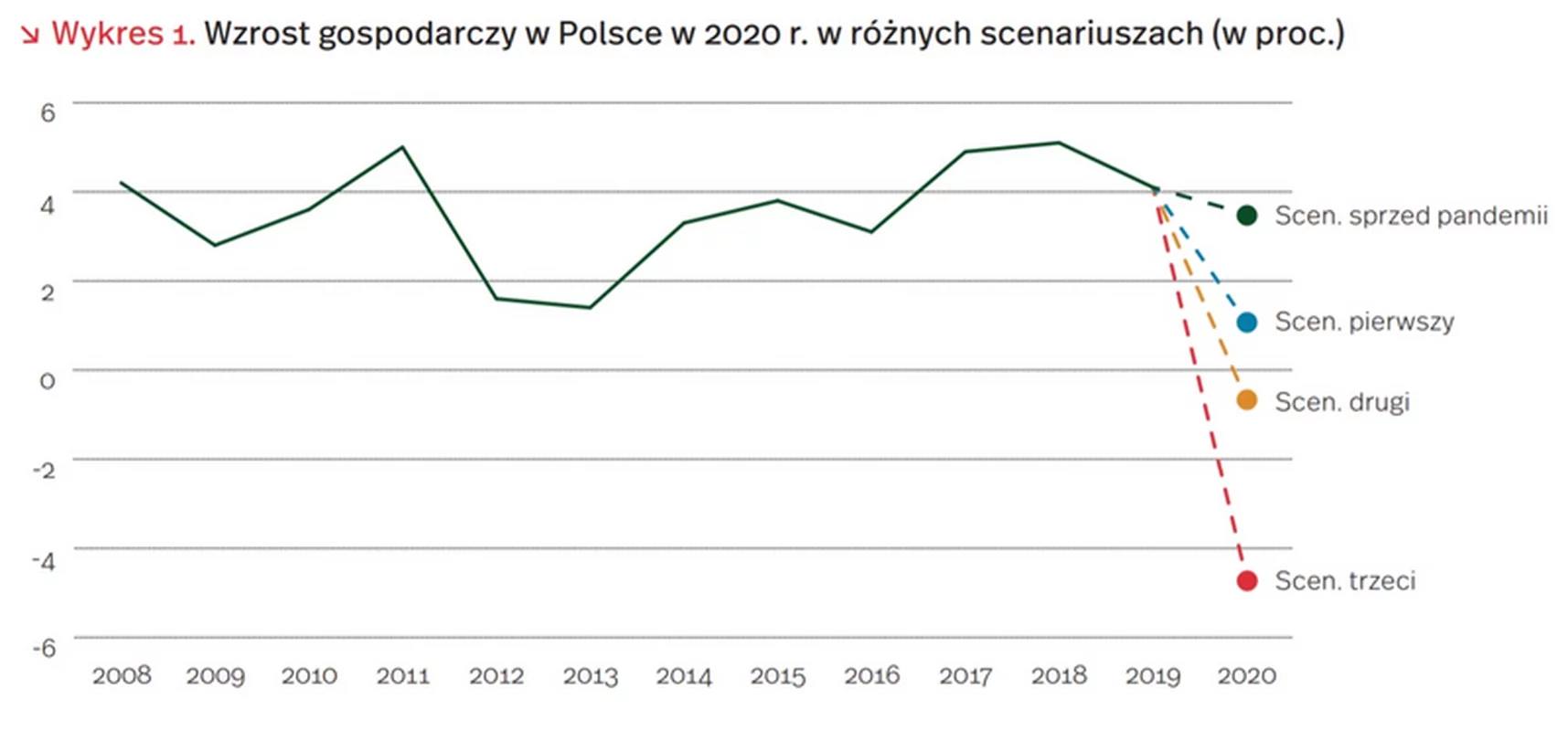Group of experts from the Polish Economic Institute (Polski Instytut Ekonomiczny, one of the main and oldest Polish think-tanks in the field of economics) developed 3 main scenarios for the Polish economy following the pandemic. And I summarize it in a few sentences.
Bad, very bad and doomsday scenario – there are no neutrals.
The first scenario is bad. A significant limitation of economic activity will continue until the end of April. The border opens to one degree or another, starting in May, and the economy begins to wake up and startup. According to analysts, in this case, the final annual GDP growth will be 1%, that is, a month and a half of an economic impasse will eat 2.5% of GDP. This is generally bad, but nothing extraordinary – in 2002, for example, the total GDP growth was 1.2%.
The second scenario is very bad. According to him, the peak of the epidemic will occur in early to mid-May, and the economy will start to launch only in early June. In this case, the total annual growth will be minus 0.7% of GDP, and in general, the pandemic will “eat up” 4.2% of GDP. But such falls in the modern history of Poland have never happened before, and this means a serious recession.
Scenario three, doomsday. According to this scenario, the epidemic will capture up to half of the permanent population of Poland, and taking into account the average proportion of 20% of all patients who need hospitalization, this will lead to a tremendous blow to the healthcare system and economy, the trade turnover between the countries will decrease, numerous layoffs and bankruptcies will begin. In this case, annual growth will drop to minus 4.7% of GDP, that is, a pandemic will eat 8.2% of GDP, and this will be a disaster stronger than the financial crisis of 2008-2009. For comparison – a similar situation was only once – in 1991, after the start of the shock “Balcerovich plan” – then GDP fell to minus 7%.
